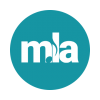Revised copy 2003
Presented as a service by:
- National Association For Music Education
- Music Publishers’ Association of The United States
- Music Teachers National Association
- National Association of Schools of Music
- National Music Publishers’ Association
Excerpted from the complete guide, which can be found on the National Association For Music Education website.
Fair use, which applies to all users, allows certain uses that would otherwise be illegal infringements of the copyright owner’s rights. For example, limited quotations of an excerpt from a work in a review or a news report are generally seen as constituting “fair use.” Fair use may also be found when the use is for purposes as criticism, comment, scholarship, research, or teaching. There is, however, no simple black-and-white test. The Fair Use provision of the law sets out four factors a court must consider in determining whether uses for these purposes may be judged “fair”:
- Purpose and character of the use (e.g., commercial or educational?)
- Nature of the work (epic poem, song, limerick, novel, opera?)
- Amount and substantiality of the portion used (how much is being copied and how important is the copied material to the work?)
- Effect on the potential market for or value of the work (is the monetary value of the work hurt by the unauthorized use?)
These four factors are listed in the law itself; in 1967 and again in 1975, legislators asked for help from the field (including the organizations that sponsor this document) to develop guidelines to help teachers and others analyze these factors. Those guidelines appear as Appendix B and Appendix C (on music and on books, respectively). Based on this legislative compromise, the intent of the law seems to be that music educators can do several things, without having secured permission of the copyright owner:
- Make a copy of a lost part in an emergency, if it is replaced with a purchased part in due course
- Make one copy per student of up to 10% of a musical work for class study as long as that 10% does not constitute a performable unit
- Make a single recording of a student performance for study and for the school’s archive
- Make a single recording of aural exercises or tests using copyrighted material
- Make up to three copies to replace a copy that is damaged, deteriorating, lost, stolen from a public library or archive (or if the existing format has become obsolete, and if, after reasonable effort by the library/archive, an unused replacement cannot be obtained at a fair price)
- Make one copy of a short verbal or a graphic work for teacher’s use in preparation for or during a class
The following, however, are expressly prohibited:
- Copying to avoid purchase
- Copying music for any kind of performance (but note the emergency exception above
- Copying without including a copyright notice
- Copying to create anthologies or compilations
- Reproducing materials designed to be consumable (such as workbooks, standardized tests, and answer sheets)
- Charging students beyond the actual cost involved in making copies as permitted above
